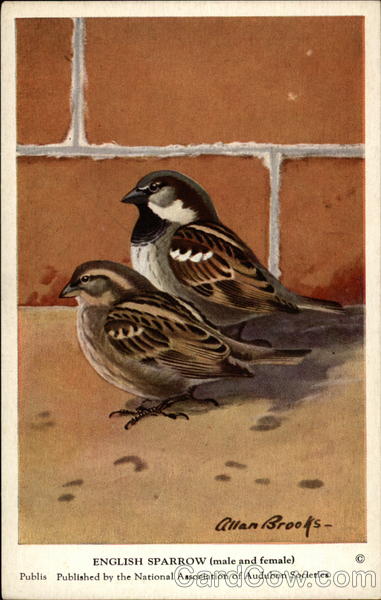Front:
allan Broos
ENGLISH SPARROW (male and female)
Publis Published by the National Association of Audubon Societies
Back:
No. 31 English Sparrow
Length 694 inches
This well-known and much-discussed bird was
first introduced into the United States in 1851.
Through its aggressive character, combined with
remarkable powers of reproduction and adaptabil-
ity, it has spread over practically all of the United
States and Canada. Many careful studies have
been made of the habits of the species, in order
to determine its true economic status. It would
seem that, now and then, the English Sparrow
does real service as a destroyer of insect pests,
but its well-known tendency to drive away our
native birds, together with its uncleanly habits
and its destruction of grain and tender garden
plants, have everywhere caused a consensus of
opinion against the little alien. The general atti-
tude of the public is well expressed in the title of
a Government Bulletin which is called “The Eng-
lish Sparrow as a Pest.” There is no doubt that
the English Sparrow is decreasing in some sec-
tions, particularly in our larger cities, where mo-
tor vehicles have replaced horses.
The nest is of any sort of material to be had,
and is placed in every kind of situation. The eggs
are from four to seven, varying from almost white
to brownish olive and marked with darker specks
and blotches.
Classification: Order Passeres. Family Fringillida.
Scientific name: Passer domesticus.
Range: Nearly over the whole of Europe, extending
eastward to Persia and India. Now over most of the
United States and Canada.
No. 31 from set of 50 Winter Birds of the Northeastern United
States. Published by the National Association of Audubon So-
cieties, 1974 Broadway, New York City. Price per set, in a box,
$1.00 post paid.



